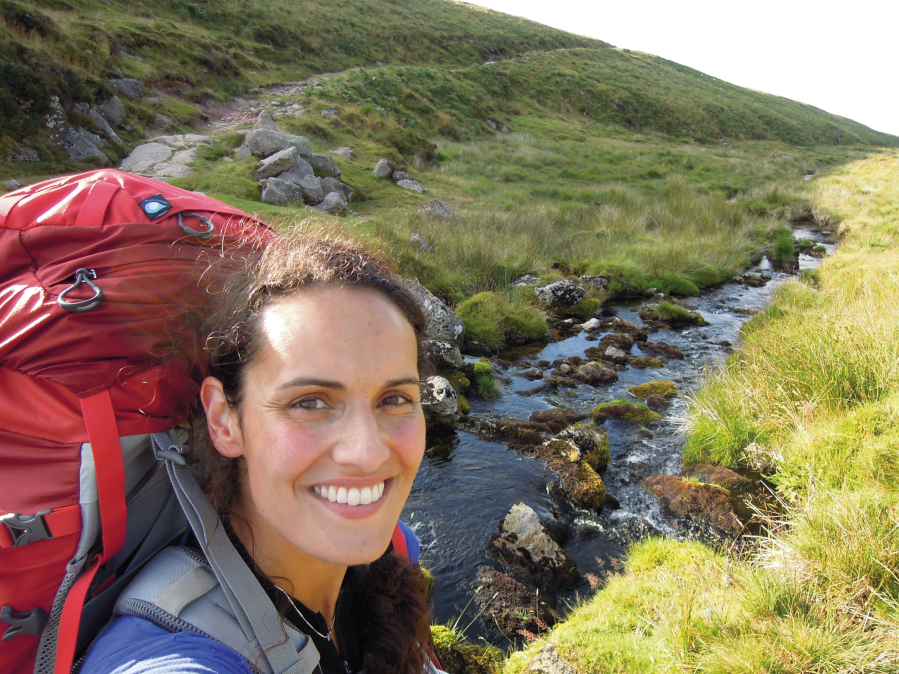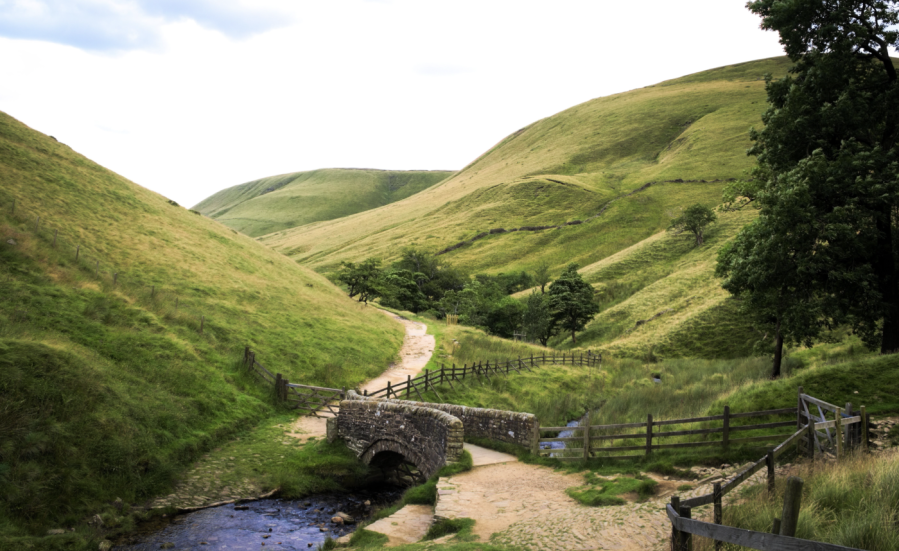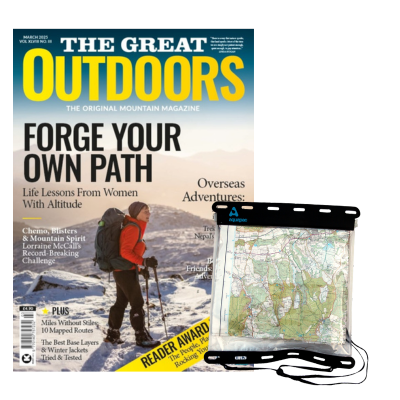As wild camping spots and routes become more populated, Mary-Ann Ochota argues we must stop turning our noses up at the new backpack camping rules for getting rid of our own waste.
Last summer I was in the Peak District on the Pennine Way near Edale just before you climb Jacob’s Ladder where the path fords the stream. I was in for a sweat-fest climb, so first, a moment of chill. I plonked myself down by the ford and swigged my water. Then I got a waft. That sweet-tang nothing-else-it-could-be telltale smell of…human poo. I looked down and next to me, literally a metre from the path, was a little pile of loose stones with pink loo roll peeking out from the cracks. I’d been a stride away from sitting in someone else’s sh*t.
Words: Mary-Ann Ochota. | Main image: The scene of the crime. Credit: Shutterstock
Now, we can all agree that’s unacceptable. But what is good behaviour? The British Mountaineering Council launched their #RespectTheWild campaign two years ago. They laid out the best advice for dealing with poos in the hills: ‘Removing all human waste using a packable toilet kit is the best solution. Away from popular spots, as a last resort, bury solid waste 15cm (6 inches) deep, replacing the earth afterwards. Pack out your toilet paper and sanitary products in a ziplock bag. Wash up and toilet a minimum of 50m from any water sources.’
Our national representative organisation encourages removing human waste from the hill as best practice. That means bagging it up, carrying it with you and throwing it away when you return and reach a litter bin. But I was taught to dig a hole, do my business (always make it wider than you think you need) and bury it.
Dig-and-dump, or bag-and-bin? That is the question…
Under dig-and-dump rules, I did wonder what I was supposed to do if I couldn’t dig a six-inch, hand-deep hole. What about rocky ground? Or frozen ground? I’ve had my fair share of sheepish ‘that’ll do’ moments as I look at a faint depression of disturbed earth, stone and a heap of smeary moss. I’ve probably walked less than 60 steps (about the distance to put 50m between me and the path), especially when alone. Nowadays, we’re exhorted to pack out our toilet paper but I’d always thought a bit of Andrex in the bottom of the hole was basically fine. Sure, pack out sanitary towels, tampons, wet wipes. But 3-ply wood pulp? Nah, it’ll be ok. I’ve never been as bad as the person with the pink loo roll on Jacob’s Ladder, but I’m certainly not spotless. Removing waste means what it says – do I really want to carry a bag of my own shit around in the hills? No, not really. But that’s what’s now being advised.
So why has the dig-and-dump advice changed? Two reasons – the first is that there are more people on our hills and mountains. A small impact from just me is magnified a hundred-fold when a hundred other wild campers are using the same spots and routes. Everyone being a little bit lazy means ground and water around popular spots is increasingly contaminated by giardia and other diarrhoea-causing microbes.
The second is that hikers are walking fertiliser applicators. Every time you ‘go’, you’re putting up to half a kilo of nitrogen-rich fertiliser into what is otherwise a fragile, low-nutrient upland soil. The plants thriving in these conditions don’t like lots of organic matter. Bulk up the land with walkers’ poo and the native plants fail and other plants bully in. Even those folk who dig-and-dump a textbook hole every time can harm sensitive upland habitats. Again, if it was just a handful of us then it would be fine. But there are loads of us.

Mary-Ann Ochota backpacking an in her element.
Credit: Mary-Ann Ochota
If you’re doing wild camping right, you’ll already have a bag for toilet paper, sanitary items and any other rubbish. And even if you were planning on digging a hole, you need to be prepared to pack it out in case the terrain demands.
You can buy a proprietary ‘wag bag’ – it’s puncture-resistant, sealable and has a gelling and deodorising agent so you can throw it into the bottom of your rucksack and forget about it until the end of the trip. To minimise chemicals and cost, a reusable container works well. I’ve found Tupperware doesn’t contain smells, but a large Dicky Bag – an airtight, zippable, neoprene cylinder originally designed for dog walkers – works wonders.
Is it ok to dig-and-dump when you’re really remote? Maybe. But our wild places are under stress. They need all the help they can get, and we need to inflict as little harm as we can manage. So unless there’s a really, really good reason not to, we can’t dig-and-dump anymore.
It isn’t UK hill and mountain culture to bag-and-bin, but it’s time we get over the yuck factor and change our ways.
Mary-Ann is a broadcaster, anthropologist and keen hillwalker. She’s the hillwalking ambassador for the British Mountaineering Council and a fellow of the Royal Geographical Society. These are her personal opinions. Find her on Instagram and Twitter @maryannochota.







